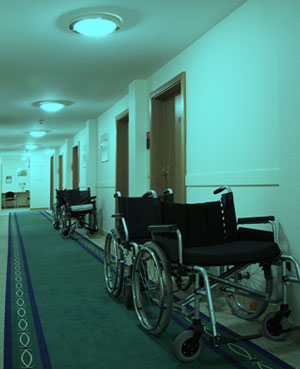FROM : Blood Flow Restriction on Lower Extremity Increased Neuromuscular Timing on Proximal Musculature While Performing a Resisted Sled Push in Healthy Subjects
Article Tittle:- Blood flow restriction on lower extremity increased neuromuscular timing on proximal musculature while performing a resisted sled push in healthy subjects
Editor’s Comment:
The evaluation of the study resulted in some suggestions for revision of the submission: LIT REVIEW/BACKGROUND At the end of paragraph 2 and the second sentence of paragraph 5, the term "blood flow resistance training" is used when "blood flow restriction" is seemingly correct. This along with some minor grammar editing should be considered.
METHODS Paragraph 3 states that isometric contractions were performed in the following ways. What was the purpose of these isometric contractions? Was this simply to verify EMG function or is there significance to any of the muscle contraction measures associated with the study? One or two additional sentences for clarity might be warranted.
DATA ANALYSIS For clarity purposes, during the data analysis section it would be valuable to define each of the four muscle activation measures used in this study and how you determined them. For instance, with time to peak, what are the endpoints used to determine that time? What is defined as decay? What endpoints are used for the duration? What is the definition of interpeak? Defining these actual terms will ensure clarity to the reader as to how you determined these measures. In the actual data I recommend you revisit the values specific to Duration in the tables. The values listed as "means" and "SD" are the exact at the 80 bpm and the 140 bpm within the same muscle group. For example, the duration value for the 80 bpm for TA is listed as .9278 & .25435 for No BFR and .9392 & .19919 for BFR. These exact same values are listed for the 140 bpm for the TA muscle. This is true for all muscle values across the duration measure in all tables. Although this may be true depending on your study, it is statistically unlikely. It may be possible that a value translation occurred and the same values were used in two categories during your analysis and table creation. I suggest you review the data points to ensure accurate values are listed and presented in the data tables along with the MANOVA results.
CONCLUSION Greater elaboration on the conclusions for clinical setting implementation is warranted. It is mentioned that "regimes for increased GMax strenghtening for patients with patellofemoral and lower back pain". It would be valuable to incorporate how. The study suggests that activation in the GMax for instance only occurred in the 80 bpm evaluation, so what clinical application would most likely implement this benefit?
Author's Revision
Author Added-
LITERATURE REVIEW/BACKGROUND
In some populations, such as people with mobility dysfunction, the ability to perform higher-level exercises can be restricted; thus, a lower-level training option is warranted. An alternative to heavy-load exercises is to add low load with blood flow restriction (BFR)
METHODS
After placement of the appropriate EMG electrodes (Delsys et al. USA), Participants executed three repetitions of walking 40 feet while pushing the XP sled at 140 beats per minute (BPM), then continued with three repetitions at 80 BPM. A metronome helped the subject maintain the rhythm. Researchers randomized the order for alternating subjects to start with slow or fast repetitions. Following the first six repetitions, the participants took a 3-minute rest break during which they adjusted their BFR personal tourniquet pressure (PTP) using Delphi Systems USA while lying down. During the BFR trials, the subjects experienced an 80% occlusion pressure for their BFR pressure, as noted by Abbas (2022). After applying pressure, the subjects repeated the same six trials, now including BFR.
In the study, the variables analyzed were the time to onset (onset) of each of these contractions, as well as maximal peak activation (TP) of muscle activation, decay or end point of muscle activation.
CONCLUSIONS
The current study's contribution was to identify the neuromuscular adaptation during BFR, especially during the acceleration part of the sled-pushing walkway. Our study found increased gluteus maximus activation and decay at the slower walking speed while increasing bicep femoris interpeak distance with the addition of BFR. This knowledge can be applied to the clinical setting with BFR training regimes for increased gluteus maximus maximus strengthening for patients with patellofemoral or lower back pain at a lower speed focusing on the starting point of gait. Nevertheless, the current study looked at one-time acute neuromuscular interaction with BFR and muscle activation. Although BFR changes the muscle activity of said muscle, the long-term effect needs to be examined to determine a clear mechanism and activation pattern.

